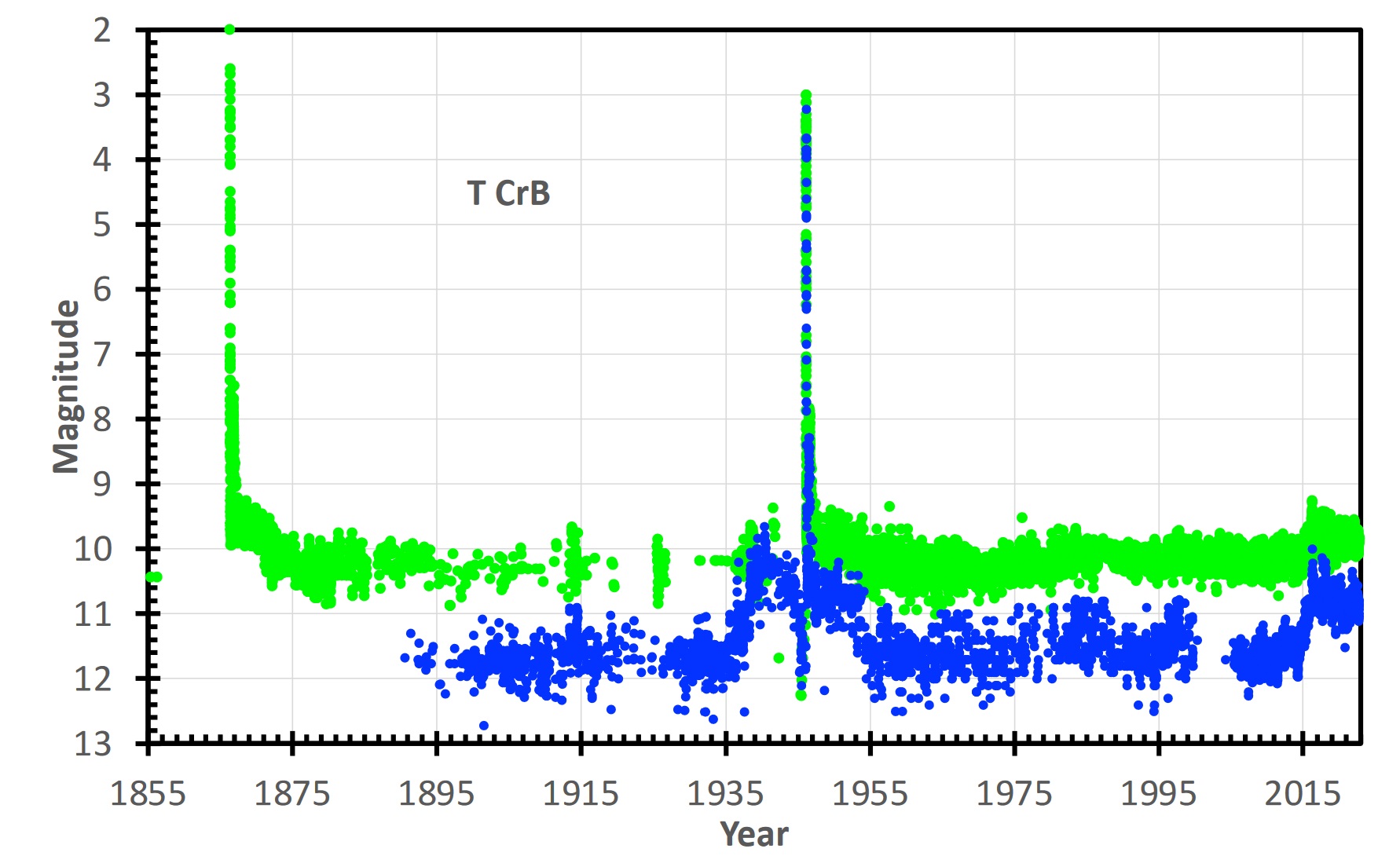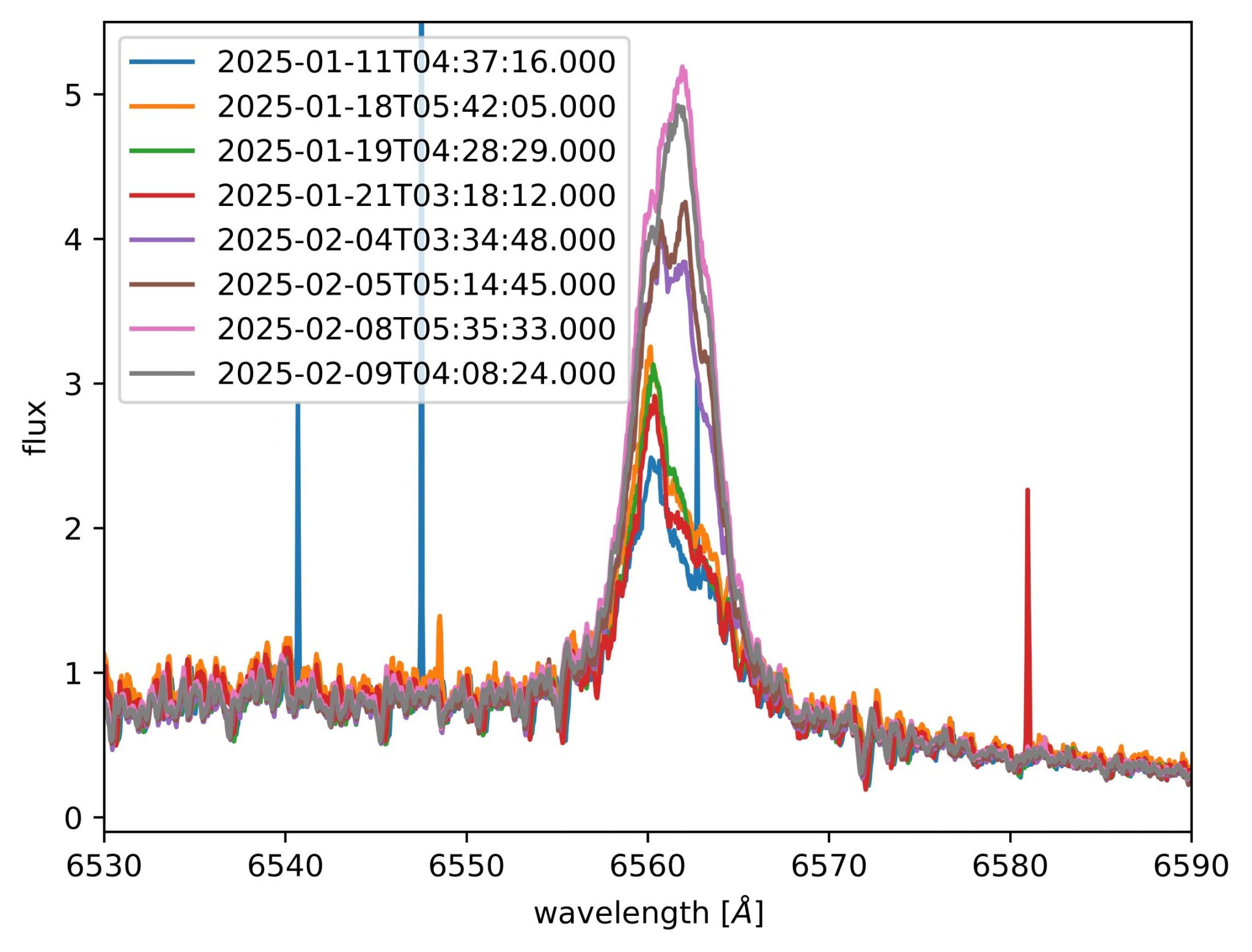The scientific community’s attention is focused on the unique variable star T Coronae Borealis, which can burst into flame at any time and briefly match the brightness of the Polaris. Scientists who specialize in such stars have been expecting an explosion since last year, but it has not yet occurred. Recently, German astronomers have received evidence that the celestial show is finally approaching.

T Coronae Borealis is one of a kind
T Coronae Borealis (T CrB), also known as the Blaze Star, has already delighted and surprised astronomers twice. In 1866 and 1946, from a faint star visible only through a telescope, it briefly turned into a star whose brightness is comparable to Polaris or Alphecca, the brightest star in the same constellation.

But a look through even the most powerful telescope on the planet will not reveal the main secret of this amazing star: it consists of two components that are too close to each other to be seen as separate sources. The more massive of them is a white dwarf, a star at the last stage of evolution that long ago shed some of its outer layers, leaving a dense core whose mass is 1.35 times that of the Sun and whose diameter is approximately equal to that of the Earth. A less massive but much larger component is the red giant, which has swollen to an exorbitant size of 66 solar diameters.
Forever bound by gravity, the two stars orbit a common center of mass and actively interact. Fresh hydrogen slowly flows from the bloated red giant to the white dwarf, forming a so-called accretion disk around it, from where the substance gradually gets to the surface itself.
Animation of the rotation of the double system T Coronae Borealis. Source: NASA’s Goddard Space Flight Center Conceptual Image Lab
At a certain point, when the pressure and temperature of hydrogen reach critical values, an uncontrolled thermonuclear reaction is ignited, and from the Earth, this explosion is observed as a powerful flash – the brightness of the system increases by about 1500 times! Shortly afterward, the process of accumulating fresh matter resumes until the next outburst. Such systems are called recurrent novae. They are a very rare type of variable stars – only 10 of them are known in our Galaxy.
But even among the recurrent novae, T CrB is unique. First of all, because it is the closest to us and the only one whose outburst can be observed with the naked eye, even in urban areas. The second reason is the mysterious decrease in luminosity shortly before the outburst. The third is an equally mysterious increase in luster about 3 months after the main outbreak. It seems that of all the recurrent new T CrBs, this is the only one that exhibits this behavior, and there is still no comprehensive explanation for it.
Waiting for the outbreak
In addition to the outbreaks of 1866 and 1946, there were probably at least two more: in 1217 and 1787, although such historical data should be treated with some caution. From this, the scientists concluded that T Coronae Borealis flares up about once every 80 years, and 79 years have passed since the last outbreak.
In 2023, the American Association of Variable Star Observers (AAVSO) published a report (https://www.aavso.org/news/t-crb-pre-eruption-dip) stating that the current change in the brightness of T Coronae Borealis indicates a possible, long-awaited outburst. The report also contained a very optimistic forecast: the event is likely to occur between April and September 2024.
Consequently, T CrB has come into the focus of the attention of many observers of variable stars, from professionals to amateurs. We wrote more about this in a separate article. During this period, a lot of observations have been accumulated, but there was no additional evidence of an approaching explosion among them.
Dr. Bradley Schaefer, a leading expert in the study of T Coronae Borealis, in his large-scale comprehensive study, suggested that the outbreak could occur in mid-2025, but with an error of 1.3 years. Therefore, if it did not happen in 2024, it may well happen in 2025-2026 or even later.

New observations give hope for a very soon show
On February 11, a group of German scientists who regularly acquire spectra of T Coronae Borealis reported a sudden dramatic change. Over the past year, they have been observing this star with the 2-meter Alfred Jensch telescope at the Karl Schwarzschild Observatory in Tautenburg (officially known as Thüringer Landessternwarte Tautenburg).
For 2.5 weeks, the scientists monitored the increase in radiation intensity in the hydrogen lines. Such behavior of T CrB has already been observed, but then it was accompanied by an increase in the brightness of the system itself, which was not recorded this time. In addition, some of the lines in the spectrum could only appear if the temperature increased to at least 40,000 K.
According to the authors of the article, this indicates a noticeable increase in the accretion rate, the intensity of the fall of matter onto the white dwarf. According to previous studies, this is exactly what the state of the system may look like shortly before an outburst. But there are no accurate predictions as to how soon an outburst can be expected.

It is worth noting that the interpretation of the data obtained may be erroneous and does not mean that we are in for an imminent outbreak. No such observations were made before the last outbreak, so astronomers have nothing to compare the latest data with. However, if the scientists are right, and if we have a relatively correct understanding of the basic processes taking place in the T CrB system, we can expect the next outburst to occur at any time. Astronomers, both professionals and amateurs, throughout the northern hemisphere are regularly monitoring the brightness of this star to study as closely as possible what happens at the beginning of the outburst.
None of the known novae, for which more than two outbursts were observed, followed a clear schedule: the interval between explosions can vary significantly and differ several times. However, any observations, both professional and amateur, will be useful to scientists for further research of this amazing Diamond in the Crown.
NASA’s flare model of T Coronae Borealis. Source: NASA’s Goddard Space Flight Center Conceptual Image Lab


